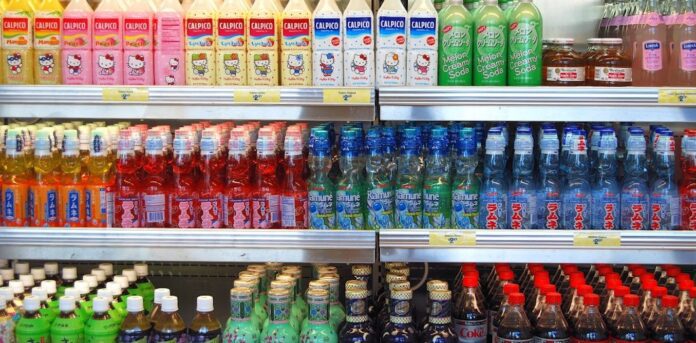Going through declining markets in Western international locations, multinational meals corporations are specializing in Africa, Asia, and Latin The usa as novel patrons of packaged meals, in a change that may additionally irritate the worldwide epidemic of energy sickness linked to diabetes. Governments are putting help at weight issues chance parts, together with unhealthy meals. Singapore, which could probably probably probably have as many as 1,000,000 residents with diabetes by 2050, now requires soda producers to chop sugar dispute materials. Weight problems and different each day life-linked illnesses have now change right into a “restful’ long-time interval grief that may price governments in healthcare liabilities and misplaced productiveness.
Nonetheless bettering public well being requires greater than piecemeal tips; governments should promote each day life changes by coaching and strengthen win admission to to healthful meals.
Not a ‘wealthy handiest’ illness
All through Asia, rural populations accustomed to lively farming jobs are migrating in growing numbers to city areas, the place they bear extra sedentary manufacturing or service sector jobs. Because of time constraints and simple availability of fairly priced high-calorie meals, these migrant populations are additionally altering their consuming habits. A not too lengthy prior to now printed examine cross-check of 98,000 adults in China argues that linking weight issues handiest to affluence is simplistic, and that geographic permutations in China’s “dietary transition” tag variations in public well being.
Alarmingly, two out of 5 adults within the Asia-Pacific house are both obese or obese. The World Heath Organisation (WHO) estimates that roughly half of the realm’s half of adults with diabetes are dwelling in Asia.
The value of weight issues within the Asia-Pacific house is estimated to be roughly US$166 billion yearly. Amongst Southeast Asian international locations, healthcare and productiveness losses from weight issues are excellent in Indonesia (US$2 to 4 billion), Malaysia (US$1 to 2 billion), and Singapore (US$400 million).
On this planet’s two most populous international locations, China and India, malnutrition has lengthy been an area nonetheless weight issues is on the upward thrust. Consistent with a 2015 Distinctive England Journal of Capsules examine cross-check, the incidence of weight issues in males in India virtually quadrupled between 1980 and 2015. For China, dwelling to 110 million adults with weight issues and doubtlessly 150 million by 2040, the incidence of weight issues elevated 15-times between 1980 and 2015.
Between 2005 and 2015, yearly nationwide revenue loss attributable to coronary heart illness, stroke, and diabetes elevated greater than sixfold in India and sevenfold in China. Statistics about youngster well being current a grim future. In India, one quarter of city youth coming into coronary heart faculty are obese and 66% of youth have an elevated chance for diabetes, whereas China is dwelling to the realm’s largest inhabitants of obese youth. A big assortment of parts may probably probably probably contribute to this development, together with lack of initiating dwelling for bodily process, the decision amongst teenagers for sedentary pastimes equivalent to pc gaming, and a rising emphasis on time spent preparing for college entrance exams.
Taxing weight issues
There are a bunch of things for the way Asia’s governments can confront weight issues. Governments within the US and Europe are introducing taxes on restful drinks and sugary drinks, with proponents arguing that such drinks contribute to weight issues by including extra energy with out offering dietary price. Large native governments imposing sugar taxes embrace Cook dinner County, Illinois, (Chicago) and Philadelphia, whereas San Francisco and Seattle conception to implement an similar taxes in 2018.
Berkeley, California, a metropolis with many high-earning and educated residents, became The usa’s first to implement a sugary beverage tax, in November 2014. Consistent with a examine cross-check within the journal PLOS Capsules, gross sales of sugary drinks in Berkeley declined by 10% appropriate by the precept yr of the tax and raised roughly US$1.4 million in income. City applies proceeds in part to youngster meals routine and group well being programmes. Even although Berkeley is an distinctive case, the spirit of city’s diagram – together with the clear make the most of of income – is normally a tenet for Asian cities.
Whereas soda consumption has slumped within the developed West, markets are rising fast in Asia.
Soda and different industrial packaged meals have slowed down within the West nonetheless have grown in Asia.
flippinyank/Flickr, CC BY-SA
The sugar struggle
Malaysia, which faces a nationwide weight issues disaster, is studying Mexico’s tax on sugary drinks as a mannequin for undoubtedly one among its have religion. Brunei provided a tax on sugary drinks in April 2017, and the Philippines senate is now debating an excise tax on sugar-sweetened drinks. In Thailand, a tax levy on sugary drinks became instituted in September 2017, and might calm rise regularly over the next six years.
Governments in Asia have additionally confirmed willingness to confront weight issues in different methods. India not too lengthy prior to now instituted a yearly weight issues analysis for all navy personnel after a glance came across one third to be obese, and China’s navy is publicly elevating considerations about sugar consumption amongst recruits.
India’s western Maharashtra relate banned so-referred to as “junk meals” in faculty canteens over considerations about childhood weight issues, and Hong Kong will shortly introduce a labelling plot for pre-packaged meals in faculties.
Coverage implications
Regardless of the adoption or consideration of taxes on sugary drinks in a number of cities appropriate by the realm, it is by no means sure whether or not or not such taxes positively have an effect on well being outcomes. There may be purpose for some optimism, equivalent to an Asian Enchancment Financial establishment examine cross-check discovering {that a} 20% tax on sugar-sweetened drinks became related to a 3% minimize charge in obese and weight issues incidence, with the best perform on younger males in rural areas.
From a coverage evaluation degree of view, long-time interval tales are helpful to go looking out out life-long well being impacts, and evaluation appropriate by circumstances could be very principal to go looking out out the sensitivity of consumption to incremental will improve in tax charges. Gathering recordsdata is a very very important early step; an instance is India’s meals routine atlas, which supplies a relate-by-relate comparability on a variety of public well being indicators, together with weight issues.
Yet another house in sugar taxes is socio-economic fairness; taxes on low cost, unhealthy meals can influence low-income populations. For example, in 2011 Denmark adopted a miles-reaching “elephantine tax”“ that coated all merchandise with saturated fat. After handiest one yr the tax became scrapped, as have been plans for a sugar tax, attributable to considerations about designate burdens for patrons. An extra grief is dinky coverage modify; patrons may probably probably even merely shift consumption to non-taxed objects which can be additionally excessive in sugar, or rep methods to bypass taxes. Notably, many Danish patrons have been merely crossing into Germany for extra cheap merchandise.
A slim deal with straightforward tax options may probably probably even rating fast political features nonetheless dangers leapfrogging frequent public well being and development targets. For example, probably decisions to sugary drinks is perhaps not available in a number of Asian cities attributable to unlucky-quality faucet water. Taxes on sugary drinks should complement broader initiatives that incentivise more healthy existence. A 2016 examine cross-check of weight issues in India argues that linked coverage should take into memoir nuanced socio-cultural parts over a “one-dimension-fits-all” diagram.
Following Berkeley’s instance, governments may probably probably even calm follow soda tax income to meals routine and bodily coaching programmes, and embrace info about sugar in faculty curricula. The style may probably probably even calm take into memoir native stipulations, beef up coaching, and current win admission to to healthful probably decisions. That’s the basis for a sturdy diagram to Asia’s weight issues epidemic.

